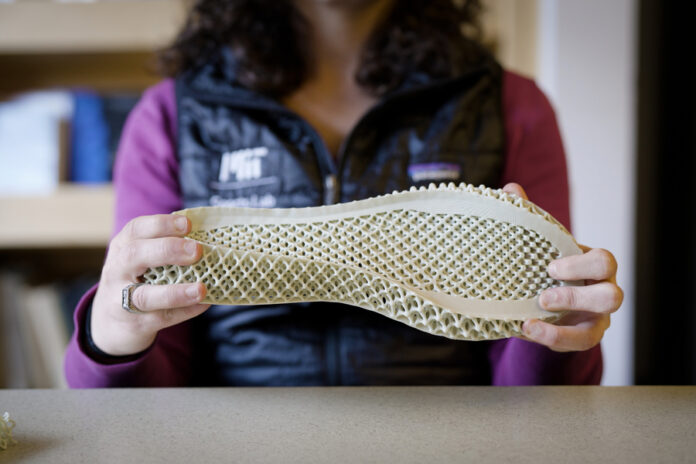With the goal of discovering which shoe best suits a person’s particular running style, MIT engineers have developed a new model that predicts how certain shoe properties will affect a runner’s performance.
“Shoe designers are starting to 3D print shoes, meaning they can now make them with a much wider range of properties than with just a regular slab of foam,” says Sarah Fay, a postdoc in MIT’s Sports Lab and the Institute for Data, Systems, and Society (IDSS). “Our model could help them design really novel shoes that are also high-performing.”
“We’ve allowed for enough flexibility in the model that it can be used to design custom shoes and understand different individual behaviors,” Fay says. “Way down the road, we imagine that if you send us a video of yourself running, we could 3D print the shoe that’s right for you. That would be the moonshot.”
The problem with existing designs of 3D-printed shoes
Current designs incorporate 3D-printed midsoles that resemble intricate scaffolds, the geometry of which can be tailored to give a certain bounce or stiffness in specific locations across the sole.
According to Fay, the challenge lies in predicting what a runner will do when you put an entirely new shoe on them – hence the importance of coupling the dynamics of the runner with the properties of the shoe.
The solution
Fay and Anette “Peko” Hosoi, professor of mechanical engineering at MIT looked first to represent a runner’s dynamics using a simple model. They drew inspiration from Thomas McMahon, a leader in the study of biomechanics at Harvard University, who in the 1970s used a very simple “spring and damper” model to model a runner’s essential gait mechanics. Using this gait model, he predicted how fast a person could run on various track types, from traditional concrete surfaces to more rubbery material. The model showed that runners should run faster on softer, bouncier tracks that supported a runner’s natural gait.
Following McMahon’s lead, Fay and Hosoi developed a similar, simplified model of a runner’s dynamics. The model represents a runner as a center of mass, with a hip that can rotate and a leg that can stretch. The leg is connected to a box-like shoe, with springiness and shock absorption that can be tuned, both vertically and horizontally.
Since most runners tend to minimize the impact their feet make with the treadmill and the amount of energy their legs expend, researchers simulated a wide range of shoe styles and used the model to predict a runner’s gait and how efficient each gait would be for a given type of shoe.
This quantitative way to design a shoe not only can be tailored to different running scenarios, but also provides another alternative to designers who would like to explore new 3D printing ideas in the footwear industry.
Remember, you can post job opportunities in the AM Industry on 3D ADEPT Media free of charge or look for a job via our job board. Make sure to follow us on our social networks and subscribe to our weekly newsletter : Facebook, Twitter, LinkedIn & Instagram ! If you want to be featured in the next issue of our digital magazine or if you hear a story that needs to be heard, make sure to send it to contact@3dadept.com






